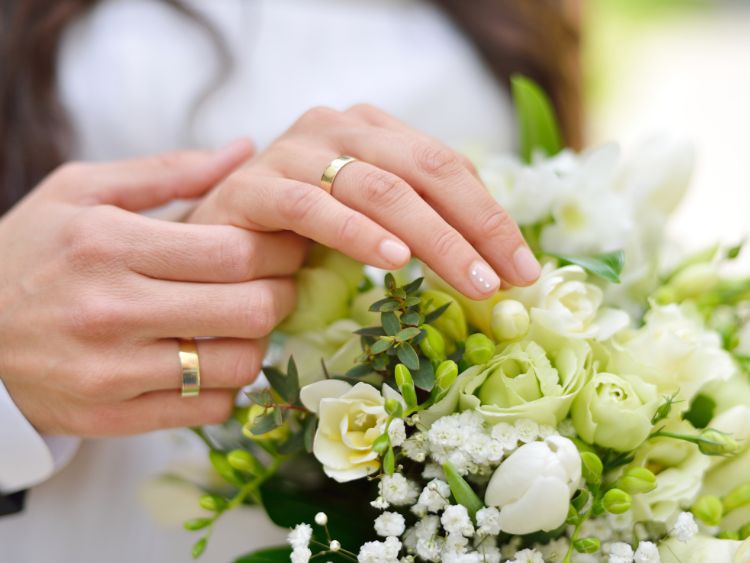Formal weddings are all about elegance, refinement, and style. But knowing exactly what “formal wedding attire” entails can be tricky, especially with the ever-evolving fashion landscape. Whether you’re the guest of honor, a close friend, or attending your first formal wedding, dressing appropriately is key to enjoying the occasion without any fashion missteps. Let’s dive into the essentials of formal wedding attire, explore the do’s and don’ts, and ensure you’re ready to shine.
What is Formal Wedding Attire?
Formal wedding attire is a step above semi-formal or casual dress codes, typically requiring more polished and sophisticated outfits. It usually implies that men should wear suits or tuxedos, while women are expected to opt for evening gowns or formal cocktail dresses. The exact expectations, though, can vary based on factors like the wedding’s location, time, and the couple’s personal style.
Key Elements of Formal Wedding Attire
To make sure you’re perfectly dressed, here are the primary components of formal wedding attire:
1. Black-Tie Standards
- For men: A black tuxedo with a white dress shirt, black bow tie, and black dress shoes are classic staples of black-tie attire. It’s timeless and universally accepted as the gold standard for formal occasions.
- For women: A floor-length gown in elegant fabrics like silk, satin, or chiffon is ideal. Black-tie events allow for a bit more glam, so feel free to choose dresses with embellishments or even a bold color.
2. Black-Tie Optional
- This option offers some flexibility. Men can either wear a tuxedo or a dark suit and tie, while women can choose between a formal gown or a tasteful cocktail dress. This option leans formal but gives guests more room to adapt to personal preferences.
3. Creative Black Tie
- This dress code blends traditional black-tie attire with a touch of creativity. Men might add a pop of color through accessories, and women might choose gowns with unique textures or patterns. It’s still formal but allows for a more personalized look.
Choosing the Right Outfit Based on Season and Venue
Summer Weddings
- For men: Lighter fabrics like linen or lightweight wool can help keep you cool while looking sharp. Opt for lighter colors, like navy or gray, if it’s a daytime ceremony.
- For women: Dresses in breathable fabrics, such as cotton or chiffon, are perfect for warm weather. Pastel colors, floral prints, or even a tea-length dress can work wonderfully.
Winter Weddings
- For men: A dark wool suit or tuxedo is perfect for winter. Adding a velvet or wool tie can provide a seasonal touch.
- For women: A floor-length gown in rich, dark colors like emerald, navy, or burgundy exudes winter elegance. Fabrics like velvet or satin add a touch of warmth and sophistication.
Destination Weddings
- For men: If the wedding is on a beach or tropical locale, opt for light-colored suits in fabrics like linen. Loafers or dressy sandals are typically acceptable.
- For women: Choose a dress that complements the setting—think flowy, light fabrics, and natural tones.
Accessorizing Formal Wedding Attire
Accessories can elevate your look while also ensuring it fits the wedding’s style. Here’s a breakdown of ideal accessories for a formal wedding.
For Men:
- Ties or Bow Ties: For traditional black-tie, stick to black or dark colors. For creative black-tie, feel free to incorporate patterns.
- Pocket Squares: Adding a crisp white or matching pocket square gives a suit or tuxedo a polished look.
- Watches and Cufflinks: Formal weddings call for understated, elegant accessories. Go for a classic watch and simple cufflinks.
For Women:
- Jewelry: Statement jewelry is great, but remember that less is often more. A single piece, like a pair of diamond earrings or a necklace, can be enough.
- Clutch or Evening Bag: Small, compact, and preferably matching your outfit. Metallic or neutral tones are usually safe choices.
- Shoes: High heels are traditional, but make sure they’re comfortable enough for dancing! For outdoor settings, block heels or wedges can work too.
Formal Wedding Attire FAQs
Q: Can I wear a short dress to a formal wedding?
A: Yes, a short cocktail dress can be appropriate for formal weddings, especially if it’s black-tie optional. Just ensure it’s in a sophisticated style, such as a knee-length sheath dress.
Q: What colors should I avoid?
A: Avoid white or anything too close to it unless otherwise specified by the bride and groom. It’s also wise to avoid overly flashy or neon colors, which can draw attention away from the couple.
Q: Do I need to wear a tuxedo to a black-tie optional wedding?
A: No, a dark suit with a tie will suffice for black-tie optional. However, a tuxedo is always a safe bet if you want to err on the side of formality.
Q: Can women wear pants to a formal wedding?
A: Absolutely. An elegant pantsuit or a jumpsuit in a sophisticated fabric and cut can be an excellent choice for formal attire. Just make sure it’s in line with the dress code’s overall tone.
Summary
Navigating the formal wedding attire dress code doesn’t have to be stressful. By understanding the expectations of black-tie, black-tie optional, and creative black-tie, you can find an outfit that not only respects the occasion but also allows you to feel confident and comfortable. Whether you’re dressing up for a winter wedding in a velvet gown or a beach celebration in a linen suit, these guidelines ensure you’ll look your best.
For further reading on formal attire standards, check out these authoritative sources:
